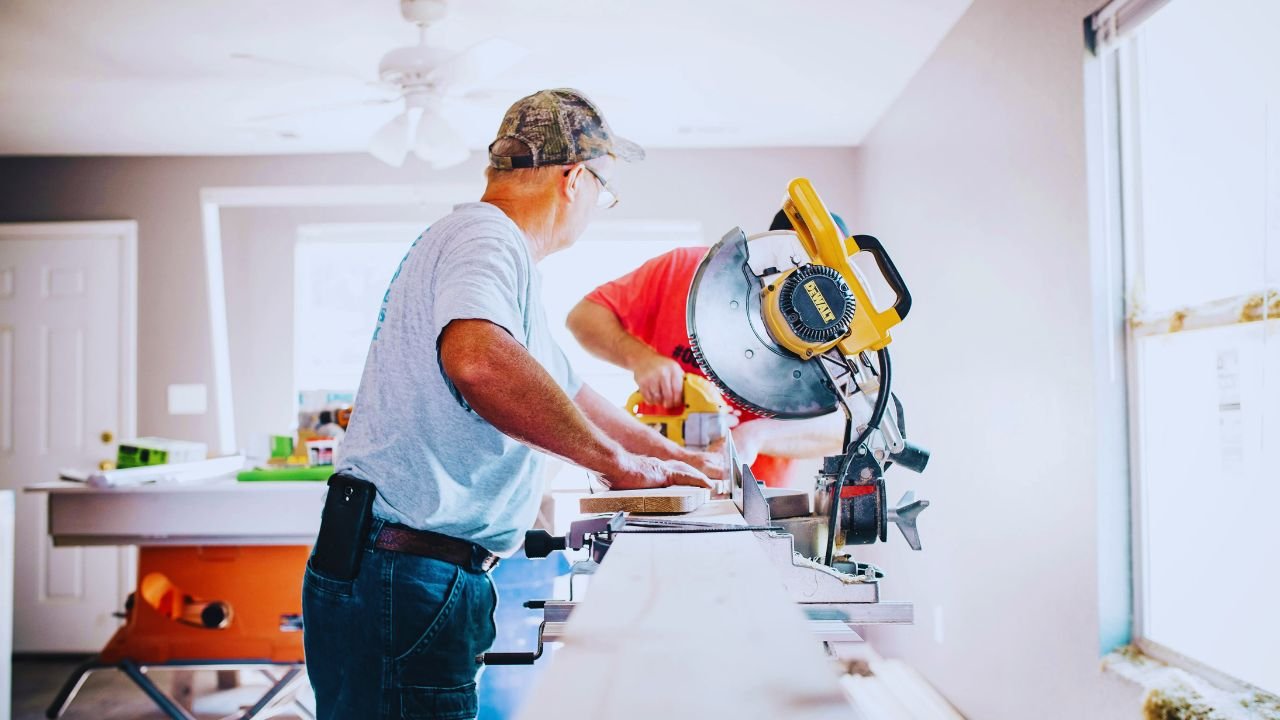DIY (Do-It-Yourself) projects have taken the world by storm, offering individuals an opportunity to express creativity while solving everyday problems. Whether you’re looking to add a personal touch to your home decor, build something functional, or simply have fun with a hands-on project, DIY can be the perfect way to bring your ideas to life. For both seasoned DIY enthusiasts and beginners, there’s a vast array of creative projects that can be tackled with a few basic tools, materials, and a little imagination. DIY offers a fulfilling experience, where you can combine practicality with artistic expression, all while saving money and achieving satisfying results.
From simple home improvements to crafting personalized gifts, DIY projects provide a sense of accomplishment and allow you to explore your problem-solving skills. The best part? Many creative solutions can be found using easily accessible materials, and with a few tips and tricks, even the most challenging tasks can become enjoyable. Whether it’s organizing your space, creating homemade decorations, or building functional pieces from scratch, the world of DIY offers endless opportunities for learning, creating, and enjoying the process. Let’s dive in and discover how you can transform ordinary items into something extraordinary with just a little time and effort!
Benefits of DIY Projects
Engaging in DIY projects offers a wide range of benefits that extend beyond just saving money. One of the main advantages is cost savings, as DIY projects eliminate labor costs and allow individuals to source materials directly, reducing expenses. Additionally, DIY projects provide an opportunity to enhance personal skills such as problem-solving, creativity, and technical abilities. These projects also foster a sense of accomplishment and self-reliance, boosting confidence and satisfaction. By taking on DIY tasks, individuals can personalize their living spaces or create unique, custom items that reflect their style. Furthermore, DIY endeavors contribute to stress relief, as engaging in hands-on activities can serve as a therapeutic outlet. Lastly, these projects encourage sustainability by reusing materials and promoting eco-friendly practices.
Cost Savings
DIY projects offer substantial cost savings by eliminating the need for professional services. When you handle tasks like home repairs, renovations, or even custom furniture projects yourself, you cut out labor costs. Additionally, by sourcing materials directly and shopping for deals, you can further reduce expenses. Over time, these savings can add up significantly. This financial freedom allows you to invest in higher-quality supplies or start new projects without breaking the bank.
Developing Practical Skills
Engaging in DIY projects provides a unique opportunity to develop practical, hands-on skills. Whether it’s learning to use power tools, sewing, or even basic carpentry, these tasks contribute to personal growth. The skills you gain can be applied to a variety of areas, helping you feel more self-sufficient in your daily life. Plus, mastering these tasks can build confidence in your ability to handle challenges. These practical skills also enhance your problem-solving abilities, making them valuable beyond DIY projects.
Personal Satisfaction
Completing a DIY project offers immense personal satisfaction that can boost your sense of accomplishment. There is something incredibly rewarding about seeing a task through from start to finish and enjoying the result of your hard work. Whether you’re crafting a custom shelf or fixing a broken appliance, the pride you feel is unmatched. This sense of achievement enhances your well-being, contributing to a positive mindset. It also fosters a sense of self-reliance, knowing you can tackle projects independently.
Boosting Creativity
DIY projects are a perfect outlet for boosting creativity and sparking innovative ideas. With complete control over the design, you can experiment with different materials, techniques, and concepts. Whether you’re making personalized gifts, revamping old furniture, or trying a new craft, DIY projects allow you to bring your unique ideas to life. The freedom to create something that reflects your style is highly empowering. Engaging in creative DIY activities also strengthens your ability to think outside the box and solve problems creatively.
Stress Relief
Engaging in DIY projects can provide excellent stress relief and act as a form of mindfulness. When you focus on a hands-on task, you’re able to immerse yourself fully in the activity, allowing you to disconnect from daily worries and pressures. The repetitive motions involved in crafting or building can have a calming effect, lowering stress levels. Whether you’re painting, knitting, or assembling furniture, DIY projects can be incredibly therapeutic. The sense of accomplishment upon completion also contributes to a mood boost.
Enhancing Problem-Solving Abilities
DIY tasks naturally encourage problem-solving, as you often encounter obstacles or challenges that require creative solutions. Whether it’s figuring out how to assemble a piece of furniture or troubleshooting a malfunctioning appliance, each project teaches you how to approach problems logically. This ability to break down tasks into manageable steps and think critically enhances your problem-solving skills. Over time, the experience gained from tackling different DIY tasks builds your confidence in handling more complex challenges. This improved problem-solving ability extends to both DIY and everyday situations.
Eco-Friendly Practices
Many DIY projects involve upcycling and using sustainable materials, making them an eco-friendly option. Instead of purchasing new products, you can repurpose old items and give them a second life. This reduces waste and the demand for new resources, which is beneficial for the environment. Whether you’re transforming old furniture into something new or using scrap materials for a craft, these practices contribute to a greener planet. By choosing eco-friendly materials and techniques, DIY projects can help you minimize your environmental footprint.
Building Self-Reliance
One of the most significant benefits of DIY projects is the sense of self-reliance they foster. Handling tasks on your own helps you feel more independent and capable. From simple repairs to large-scale home improvement projects, the ability to tackle issues without outside help builds self-confidence. This independence not only boosts your personal growth but also saves time and money. As you gain experience with various DIY tasks, you’ll feel increasingly empowered to manage and solve challenges on your own.
Customization
DIY projects offer the ultimate in customization, allowing you to create items tailored specifically to your tastes and needs. Whether it’s designing your home decor, making personalized gifts, or creating customized clothing, the possibilities are endless. This level of control ensures that your creations are unique and reflective of your personality. Customizing items also allows you to experiment with new styles and techniques, expressing yourself creatively. DIY projects can bring new life to everyday objects and transform them into something special.
Family Bonding
Many DIY projects can be shared as a family activity, providing valuable time for bonding. Whether it’s crafting a project together or working as a team to complete a larger task, DIY fosters collaboration. Working side-by-side allows family members to communicate, share ideas, and celebrate accomplishments together. These shared experiences help create lasting memories and strengthen relationships. In addition to spending quality time together, families can develop skills and work together toward a common goal, enhancing their teamwork and cooperation.
| Benefit | Description |
| Cost Savings | Reduces the need for professional services, saving money. |
| Skill Development | Enhances creativity, problem-solving, and practical skills. |
| Personalization | Allows customization to meet individual needs and preferences. |
| Eco-Friendliness | Encourages recycling and upcycling, reducing waste. |
| Stress Relief | Provides a therapeutic outlet through creative expression. |
Essential Tools for DIY Projects
Before diving into any DIY project, it’s crucial to ensure that you have the right set of tools to tackle the tasks ahead. The following is a list of must-have tools that cater to a variety of DIY endeavors, from home improvement to creative crafts. Investing in these tools not only saves time and effort but also ensures that you can complete your projects with precision and confidence.
- Hammer and Nails: A hammer is one of the most basic and essential tools in any DIY toolkit. It is primarily used for driving nails into wood, drywall, or other materials. Whether you’re assembling furniture, hanging pictures, or fixing things around the house, a hammer will be your go-to tool. Additionally, having a variety of nails in different sizes can help with various tasks, from heavy-duty jobs to delicate repairs.
- Screwdrivers (Flathead and Phillips): Screwdrivers are another essential tool for any DIY enthusiast. Flathead screwdrivers are perfect for prying open things or tightening screws that have a straight, single groove. On the other hand, Phillips screwdrivers are designed for screws with a cross-shaped slot, making them ideal for more intricate tasks like assembling furniture or installing hardware. It’s a good idea to have both types in different sizes to handle a range of projects.
- Measuring Tape: Precision is key in DIY projects, and a measuring tape helps ensure accurate dimensions for your work. Whether you’re cutting materials, installing shelves, or measuring spaces for furniture, a measuring tape allows you to take measurements with ease. Most measuring tapes come with a retractable feature, making them convenient to use and store.
- Utility Knife: A utility knife is essential for cutting materials like cardboard, plastic, fabric, foam, or even thin wood. It offers precision and control, allowing you to make straight or curved cuts, especially when you need to cut through tough materials. A sharp utility knife is more effective, and having extra blades on hand ensures you’re always prepared for clean cuts.
- Hot Glue Gun: A hot glue gun is an incredibly versatile tool that is ideal for bonding various lightweight materials like fabric, paper, plastic, and even small metal or wooden components. It’s commonly used for arts and crafts, home décor projects, and simple repairs. The fast-drying nature of hot glue means that your projects will be completed in no time, making it a convenient and essential tool in your toolkit.
- Paintbrushes and Rollers: If you’re undertaking any painting tasks, from revamping old furniture to refreshing a room’s color scheme, paintbrushes and rollers are necessary. A variety of brushes and rollers in different sizes and shapes will give you the flexibility to handle fine details and large surface areas. Brushes are perfect for edges and intricate designs, while rollers allow for faster coverage on walls and furniture.
- Sandpaper: Sandpaper is crucial for smoothing rough edges and surfaces, ensuring your projects have a professional, polished finish. Whether you’re refinishing furniture, sanding down wooden surfaces, or prepping materials for painting, sandpaper helps remove imperfections. It comes in different grits (coarse, medium, fine) that allow you to tackle various surfaces and achieve the desired smoothness.
- Power Drill: A power drill is one of the most versatile and time-saving tools you can invest in for DIY projects. It allows you to drill holes and drive screws quickly and efficiently, making tasks like assembling furniture, installing shelves, or hanging décor a breeze. Cordless power drills are especially handy, providing mobility and convenience. Additionally, with different drill bits and screwdrivers, the drill can be used for a wide range of applications.
Creative DIY Projects for Beginners
Starting your DIY journey can be both exciting and fulfilling. For beginners, countless creative projects are simple to execute yet deliver impressive results. One great idea is transforming old jars into stylish storage solutions. By painting or decorating them with ribbons and labels, these jars can be repurposed for organizing spices, office supplies, or bathroom essentials. Another beginner-friendly project is crafting handmade candles. Using soy or beeswax, essential oils, and simple molds, you can create personalized candles that add a cozy touch to your living space.
If you’re looking to personalize your home, custom wall art is a fantastic choice. You can use canvas, paint, and stencils to create abstract patterns, nature themes, or motivational quotes that brighten up any room. For those who enjoy sustainable living, upcycling old t-shirts into reusable tote bags is a creative and eco-friendly project. With just a few cuts and knots, you can turn worn-out t-shirts into sturdy bags perfect for everyday use. These beginner-friendly projects not only boost creativity but also promote a sense of accomplishment and sustainability.
Transform Old Jars into Stylish Storage
Upcycling old glass jars is an easy and practical project for beginners. Start by cleaning the jars thoroughly, then paint them with vibrant acrylic colors or chalk paint for a rustic look. Adding decorative labels or ribbons can further personalize them. These jars are ideal for storing spices in the kitchen, organizing office supplies, or holding bathroom essentials like cotton balls and Q-tips. This project not only reduces waste but also adds a touch of creativity to your space.
Create a Vision Board
Crafting a vision board is a fun and motivating project for beginners. All you need is a corkboard, scissors, glue, and magazine cutouts or printed images that represent your goals. Arrange these images on the board in a visually appealing way, using pins or adhesives to secure them. This visual representation of your aspirations serves as a daily reminder of your dreams and goals, keeping you inspired to work towards them. It’s an excellent way to blend creativity with personal development.
DIY Pallet Furniture
For those who want to experiment with basic woodworking, creating furniture from wooden pallets is a beginner-friendly project. Start by sourcing sturdy pallets, sanding them to smooth the surface, and then painting or staining them as desired. You can craft simple coffee tables, bookshelves, or even garden seating arrangements. Pallet furniture not only adds a unique rustic charm to your home but also promotes sustainable living by repurposing materials. With a little effort, you can create functional and stylish pieces for your space.
Handmade Candles
Making your candles is a relaxing and rewarding project. Start by melting soy or beeswax in a double boiler, then add your favorite essential oils for fragrance. Pour the wax into molds or mason jars with a pre-inserted wick, and let it cool. You can experiment with colors and shapes to match your decor or gift them to loved ones. Handmade candles add a personal and cozy touch to your home.
Custom Wall Art
Unleash your artistic side by creating custom wall art. Use a blank canvas, acrylic paints, and stencils to craft unique designs. You can try abstract patterns, motivational quotes, or nature-inspired themes. For a textured look, incorporate materials like fabric, beads, or dried flowers. This DIY project allows you to personalize your space while showcasing your creativity.
Upcycled T-Shirt Tote Bags
Turn old t-shirts into eco-friendly tote bags with just a few cuts and knots. Cut off the sleeves and neckline of the t-shirt, then trim the bottom into strips. Tie the strips together to close the bottom of the bag, creating a sturdy and reusable tote. These bags are perfect for groceries, gym gear, or casual outings. It’s a sustainable and stylish way to repurpose old clothing.
DIY Hacks for Easy Solutions
| Problem | DIY Solution |
| Tangled earphone wires | Use a binder clip to keep wires organized. |
| Scratches on wooden furniture | Rub a walnut over scratches to minimize their appearance. |
| Stuck zipper | Apply graphite from a pencil to the zipper teeth for smooth movement. |
| Lost button on jeans | Use a rubber band as a temporary replacement for a button. |
| Broken shoelace tip | Dip the frayed end in clear nail polish to prevent further unraveling. |
Advanced DIY Projects for the Enthusiast
For those looking to elevate their DIY skills, advanced projects offer the perfect opportunity to challenge creativity and craftsmanship. These projects are designed for enthusiasts who are ready to take on more complex and rewarding tasks. Whether you’re building sustainable gardens, designing custom furniture, or integrating smart home systems, these projects push the boundaries of what’s possible with DIY.
From crafting personalized candles with unique fragrances to constructing a mini greenhouse for year-round gardening, the possibilities are endless. Smart home upgrades, such as installing automated lighting or security systems, combine technology and hands-on work. For those who love woodworking, building a custom home bar or creating stunning resin art pieces will test your skills while adding value to your home. These projects not only improve your living space but also offer a sense of accomplishment when completed.
Build a Vertical Garden
A vertical garden is perfect for maximizing space, especially in urban settings. Start by selecting a sturdy base like a wooden pallet, PVC pipes, or even an old ladder. Clean and sand the base before assembling it into a vertical frame. Secure planting containers like pots or recycled cans to the structure using screws or strong adhesives. Fill each container with soil and choose a mix of herbs, flowers, or vegetables for planting. To make it more functional, incorporate a drip irrigation system for consistent watering. These gardens not only beautify small spaces but also provide fresh produce at your fingertips.
Make Your Candles
Creating candles is a blend of art and science. Begin by melting soy or beeswax in a double boiler. Prepare your molds or containers (glass jars, teacups, or tins) by securing a wick at the center using adhesive. Once the wax is melted, mix in essential oils for fragrance and add natural or synthetic color pigments. Make sure the wick stays erect as you carefully pour the mixture into the containers.t. Let the candles cool and set for a few hours. Decorate the outer containers with paint, fabric, or personalized labels to give your candles a polished, unique look.
Install a DIY Smart Home System
Transforming your home into a smart hub is easier than ever. Start by identifying the devices you want to automate, such as lighting, thermostats, or security cameras. Purchase DIY-friendly gadgets like smart bulbs (e.g., Philips Hue), thermostats (e.g., Nest), or cameras (e.g., Ring). Follow the manufacturer’s instructions to connect these devices to your home Wi-Fi network. Use a central app or voice assistant like Alexa or Google Home for seamless control. Enhance your setup by integrating motion sensors or smart plugs, creating a fully connected and energy-efficient environment.
Build a Custom Furniture Piece
Designing custom furniture allows you to create something truly unique and functional. Begin with a clear plan, including measurements and a design sketch. For beginners, projects like coffee tables or bookshelves are ideal. Purchase high-quality wood or repurpose reclaimed materials. To cut and put the framework together, use a saw, drill, and other equipment. Sand the surface thoroughly, then apply a wood stain or paint for the finish. Add personal touches, such as engraved designs, contrasting colors, or unique hardware, to make the piece truly one-of-a-kind. This project enhances your space while showcasing your craftsmanship.
Create a Resin Art Masterpiece
Resin art is perfect for making visually stunning creations like coasters, trays, or large decorative pieces. Start by gathering materials, including epoxy resin, hardener, pigments, glitter, and molds. Mix the resin and hardener according to the instructions, ensuring a precise ratio. Add pigments or glitter to create the desired effect. Pour the mixture into a silicone mold or onto a surface, using tools like spatulas to spread it evenly. Experiment with techniques like swirling or layering for unique designs. Let the resin cure for at least 24 hours, and finish with sanding or polishing for a glossy look.
Design and Build a Home Bar
A home bar is a rewarding project for anyone who enjoys hosting. Start by choosing the size and layout, considering available space. Build the frame using wood or metal, ensuring stability. Include shelves or cabinets for storing glasses, bottles, and bar tools. Add a countertop using materials like wood, marble, or epoxy resin for a polished finish. Enhance functionality by incorporating LED lighting, a built-in wine rack, or hooks for hanging glasses. Customize the bar with your preferred theme, such as rustic, modern, or industrial. This project not only boosts home aesthetics but also serves as a great entertainment area.
Create a DIY Solar Charger
Harnessing solar energy is a highly advanced yet practical project. Start with a small solar panel, a rechargeable battery, a charge controller, and a USB output module. Assemble the components into a compact case, ensuring proper wiring connections. Install the solar panel on the exterior of the case for maximum sunlight exposure. Test the charger by connecting a device like a smartphone or tablet. For added functionality, include multiple USB ports or a built-in LED light. This project reduces reliance on traditional power sources and serves as a handy tool for outdoor activities or emergencies.
Construct a Mini Greenhouse
Building a mini greenhouse is perfect for year-round gardening. Begin by selecting a design—either a freestanding structure or an attached one. Use PVC pipes or wood to create the frame, securing it firmly to the ground. Cover the structure with transparent plastic sheets or polycarbonate panels to retain heat and light. Inside, add shelves for potted plants and install a ventilation system to regulate temperature and humidity. To enhance the greenhouse, consider adding an automatic watering system. This project is ideal for growing fresh produce or exotic plants in any climate, making it both functional and eco-friendly.
Safety Tips for DIY Projects
While DIY projects can be fun and fulfilling, safety should always come first. Follow these tips to avoid accidents:
- Put on safety goggles and gloves, among other protective gear.
- When handling chemicals or paints, make sure there is enough ventilation.
- Use tools according to the manufacturer’s instructions.
- In the event of minor injuries, keep a first-aid kit close at hand.
- Avoid multitasking to maintain focus and precision.
Wrapping Up: Embrace Your Creativity with DIY Solutions
DIY projects offer a powerful outlet for creativity, allowing you to address everyday needs and challenges in a personalized and efficient way. Whether you’re transforming your living space, making thoughtful gifts, or tackling practical issues, DIY solutions provide a fulfilling and rewarding experience. The sense of accomplishment that comes with crafting something from scratch is irreplaceable, and it fuels your creativity for future projects.
By following expert tips and utilizing your imagination, you can unleash your creative potential, turning any idea into a reality. No matter the size of the task, DIY gives you the flexibility to experiment, learn, and grow. So, gather your tools, dive into a new project, and start creating unique solutions that showcase your personal touch!
FAQs
How can I get started with DIY projects as a beginner?
Start small by choosing simple projects like decorating jars or creating a vision board. Gather essential tools and materials, follow online tutorials, and take your time to enjoy the process. Building confidence with smaller tasks will prepare you for more complex projects.
What are some eco-friendly DIY ideas?
Eco-friendly DIY ideas include upcycling old furniture, creating compost bins, using recycled materials for crafts, and making your cleaning products. These projects contribute to sustainability while enhancing creativity.
How do I ensure safety during DIY projects?
Always wear protective gear, use tools as directed, and maintain a clean workspace. Avoid rushing through tasks, and ensure proper ventilation when working with chemicals or paints. Keeping a first-aid kit nearby is also essential.
What materials can I use for DIY home decor?
Common materials for DIY home decor include wood, fabric, glass jars, paper, cardboard, and recycled items like cans and bottles. These materials are affordable and versatile for various creative projects.
Can DIY projects save money?
Yes, DIY projects often save money by reducing the need for professional services or purchasing expensive items. Creating personalized solutions at home is usually more cost-effective.
Are there online communities for DIY enthusiasts?
Absolutely! Platforms like Pinterest, Reddit, and Facebook groups host vibrant DIY communities. These platforms allow you to share your creations, seek advice, and gain inspiration from others.
What are the most popular DIY trends in 2025?
Popular trends include upcycled furniture, personalized home decor, DIY smart home installations, and eco-friendly crafts. People are increasingly focusing on sustainability and functionality in their projects. By implementing these DIY tips and tricks, you can transform your living space, solve everyday challenges, and express your creativity. Get started today and discover the joys of hands-on innovation!






